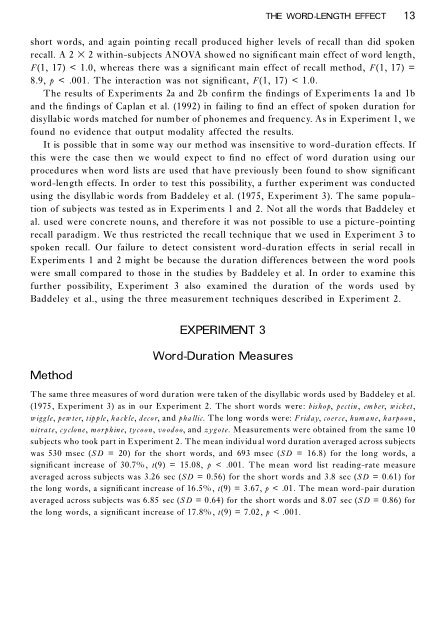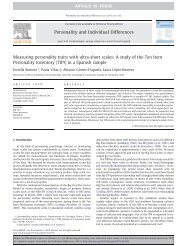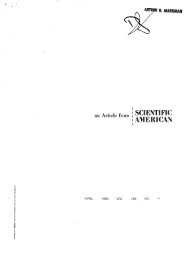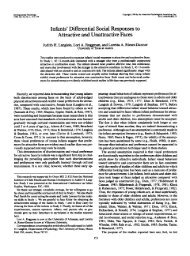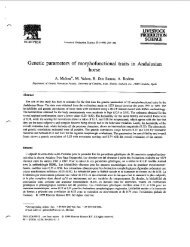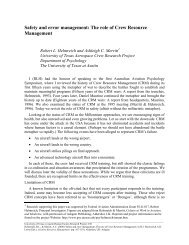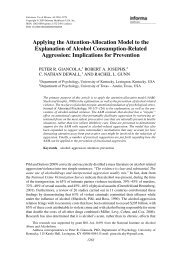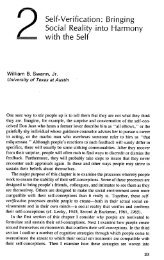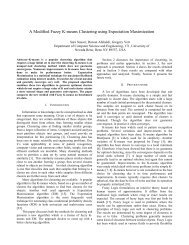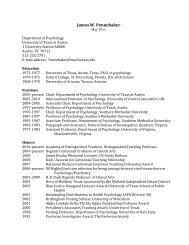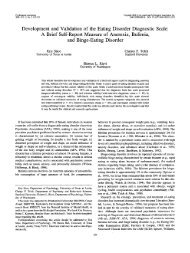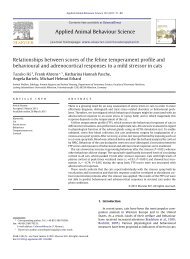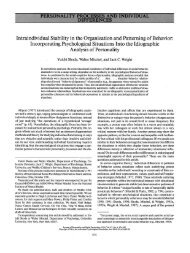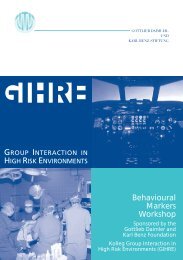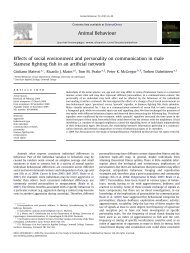The Word-Length Effect and Disyllabic Words (Lovatt
The Word-Length Effect and Disyllabic Words (Lovatt
The Word-Length Effect and Disyllabic Words (Lovatt
Create successful ePaper yourself
Turn your PDF publications into a flip-book with our unique Google optimized e-Paper software.
THE WORD-LENGTH EFFECT 13<br />
short words, <strong>and</strong> again pointing recall produced higher levels of recall than did spoken<br />
recall. A 2 3 2 within-subjects ANOVA showed no signi®cant main effect of word length,<br />
F(1, 17) < 1.0, whereas there was a signi®cant main effect of recall method, F(1, 17) =<br />
8.9, p < .001. <strong>The</strong> interaction was not signi®cant, F(1, 17) < 1.0.<br />
<strong>The</strong> results of Experiments 2a <strong>and</strong> 2b con®rm the ®ndings of Experim ents 1a <strong>and</strong> 1b<br />
<strong>and</strong> the ®ndings of Caplan et al. (1992) in failing to ®nd an effect of spoken duration for<br />
disyllabic words matched for number of phonemes <strong>and</strong> frequency. As in Experiment 1, we<br />
found no evidence that output modality affected the results.<br />
It is possible that in some way our method was insensitive to word-duration effects. If<br />
this were the case then we would expect to ®nd no effect of word duration using our<br />
procedures when word lists are used that have previously been found to show signi®cant<br />
word-length effects. In order to test this possibility, a further experiment was conducted<br />
using the disyllab ic words from Baddeley et al. (1975, Experiment 3). <strong>The</strong> same population<br />
of subjects was tested as in Experim ents 1 <strong>and</strong> 2. Not all the words that Baddeley et<br />
al. used were concrete nouns, <strong>and</strong> therefore it was not possible to use a picture-pointing<br />
recall paradigm. We thus restricted the recall technique that we used in Experiment 3 to<br />
spoken recall. Our failure to detect consistent word-duration effects in serial recall in<br />
Experim ents 1 <strong>and</strong> 2 might be because the duration differences between the word pools<br />
were small compared to those in the studies by Baddeley et al. In order to examine this<br />
further possibility, Experiment 3 also examined the duration of the words used by<br />
Baddeley et al., using the three measurem ent techniques described in Experiment 2.<br />
Method<br />
EXPERIMENT 3<br />
<strong>Word</strong>-Duration Measures<br />
<strong>The</strong> same three measures of word duration were taken of the disyllabic words used by Baddeley et al.<br />
(1975, Experiment 3) as in our Experiment 2. <strong>The</strong> short words were: bishop, pectin, em ber, wicket,<br />
w iggle, pew ter, tipple, hackle, decor, <strong>and</strong> pha llic. <strong>The</strong> long words were: F riday, coerce, hum ane, harpoon,<br />
nitrate, cyclone, morphine, tycoon, voodoo, <strong>and</strong> zygote. Measurements were obtained from the same 10<br />
subjects who took part in Experiment 2. <strong>The</strong> mean individu al word duration averaged across subjects<br />
was 530 msec (S D = 20) for the short words, <strong>and</strong> 693 msec (SD = 16.8) for the long words, a<br />
signi®cant increase of 30.7% , t(9) = 15.08, p < .001. <strong>The</strong> mean word list reading-rate measure<br />
averaged across subjects was 3.26 sec (SD = 0.56) for the short words <strong>and</strong> 3.8 sec (SD = 0.61) for<br />
the long words, a signi®cant increase of 16.5% , t(9) = 3.67, p < .01. <strong>The</strong> mean word-pair duration<br />
averaged across subjects was 6.85 sec (S D = 0.64) for the short words <strong>and</strong> 8.07 sec (S D = 0.86) for<br />
the long words, a signi®cant increase of 17.8% , t(9) = 7.02, p < .001.


